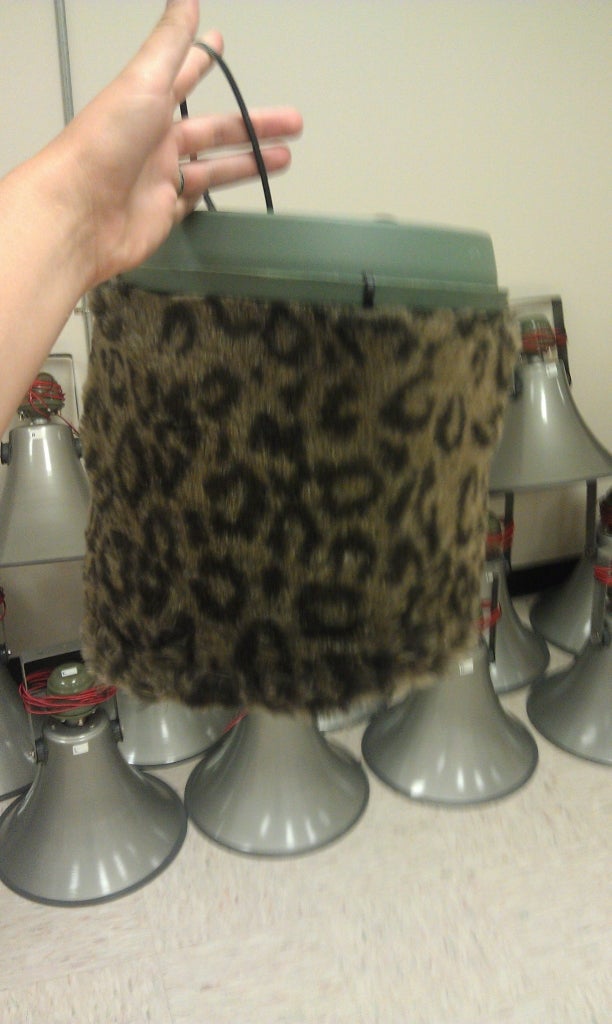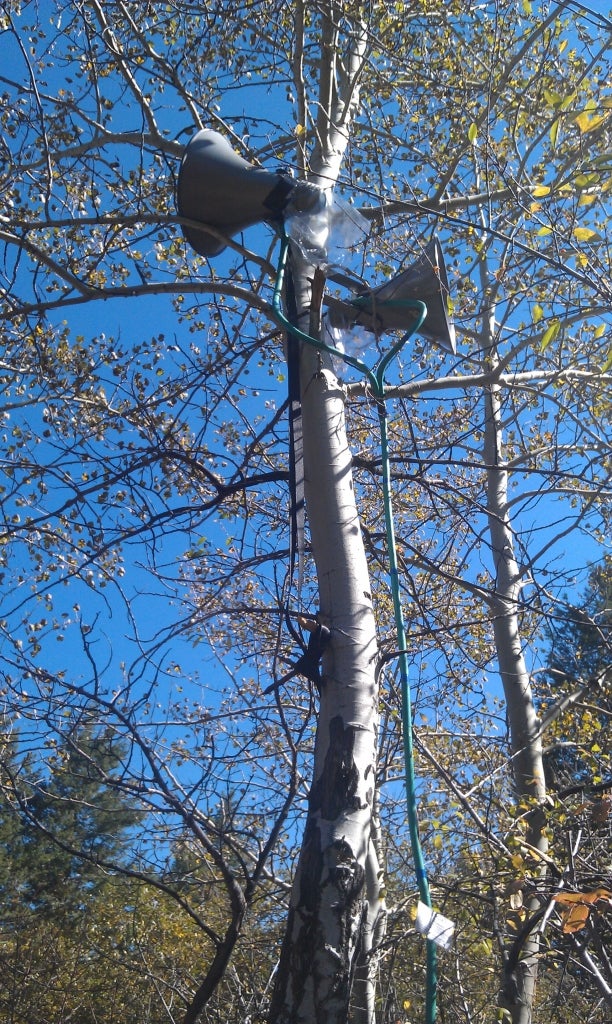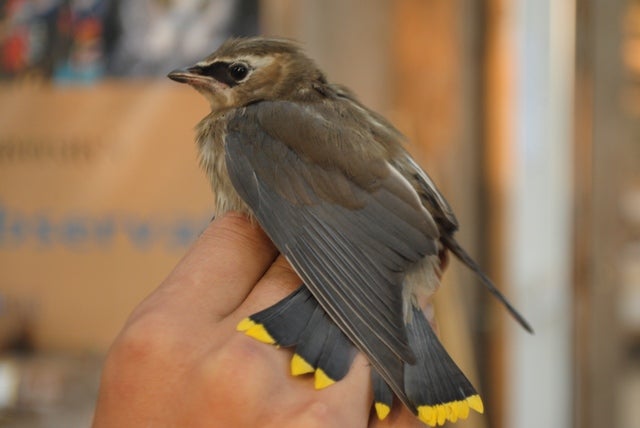For the past two years, IBO and Boise State University’s Sensory Ecology Lab have collaborated on a large-scale research project to discover what effects road noise might have on the birds that use Lucky Peak as a migration stop over site.
If you’ve visited Lucky Peak recently, you may have heard about the “Phantom Road” project, or asked questions about the strange fuzzy wind-screens hanging in the shrubs.

IBO Outreach Specialist and Boise State Graduate Student Heidi Ware, worked with her adviser–Boise State professor, Dr. Jesse Barber –and post-doctoral researcher–Dr. Chris McClure –to set up 15 sets of speakers in trees along the ridgeline. This allowed them to play back recorded road noise, replicating the sound of a 500 yard long stretch of busy highway. They turned the road noise on and off over 4 day blocks throughout fall migration, and also compared our data from the ridge to IBO’s data from Lucky Peak, so they could contrast migrant birds exposed to noise vs those that were not.
Now, after two years of field work and crunching a lot of numbers, the Sensory Ecology research team finally has some results to share with you!

This week we published the first paper about the project, sharing the results of our songbird point count surveys. (Get the full text of our article, “An experimental investigation into the effects of traffic noise on distributions of birds: avoiding the phantom road”).
We counted birds near the “road” and birds near Lucky Peak and found some important differences between loud and quiet sites. We documented more than a one-quarter decline in overall bird numbers.
Even the most common species were impacted negatively by the road noise. Yellow Warblers and Cedar Waxwings almost completely avoided the Phantom Road site when the noise was turned on.

Why is this research so important?
This research is the first to show that road noise alone can have negative impacts on birds. This is important because until now studies have only shown that roads are bad for birds. It’s unlikely that anyone is going to tear out a road to protect migrants. However, if we can show that noise is one of the main factors causing the negative impact of roads, we can take measures to make roads quieter without eliminating them all together. (Ex: changing the road substrate, creating barriers to buffer sound, changing speed limits, or even limiting daily traffic through areas such as National Parks).
Right now, 83% of the continental US is within hearing distance (1km) of a road, so you can see why research on this topic is necessary!
The conservation community has been waiting for research like this, which might help protect habitat in roaded areas. Within a day of our paper being published, reporters all over the world began sharing our research findings. From NPR, to UK’s ‘The Telegraph‘, to conservation and science news sites, the word is spreading quickly.
This is the first paper to come out of our research on the “phantom road” project, but stay tuned for more updates when Heidi shares results from her thesis work!